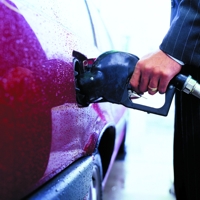Monitoring of Oil, Petrol, and Gasoline Separators
Monitoring of oil, petrol, and gasoline separators

Monitoring of oil, petrol, and gasoline separators
Using oil separators and oil water separators to protect groundwater sources from oil, gasoline and petrol pollution is crucial. Water, especially groundwater sources used for drinking water and other human use, is a valuable resource that must be protected from pollution. Car repair shops, airport runways and industrial applications can produce oily water runoff that has the potential to cause groundwater contamination.
Oil separators and oil water separators prevent the discharge of these hazardous substances into the environment, thus preventing groundwater contamination.
Oil separators and oil water separators must comply with the requirements specified by the European Standard EN 858-1:2002. However, the installation of an oil separator alone does not fully protect groundwater sources. In order to ensure the reliable functioning of the oil water separation system, the installation has to be checked regularly and routinely monitored and verified. Without these safety and maintenance checks, environmental damage and the resulting risk of liability cannot be prevented.
Close monitoring of oil separators and oil water separators is provided with an electronic alarm system, featuring an early-warning mechanism that is able to recognize critical operating conditions of the separator early enough to prevent any discharge of pollutants into the environment.
In areas where no persons are present and where supply voltages are available, an alarm release system, operated via a GSM mobile network, can offer 24/7 protection.
The requirements for electronic alarm systems for oil separators are also specified in the European Standard EN 858-1:2002. It includes specific requirements involving an “installation that releases an alarm when excessively high light liquid or high/low sewage levels” are detected.





 +44 161 6336431
+44 161 6336431